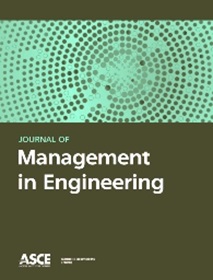揭示新冠肺炎的施工现场-特定传播模式:香港的时空连通性分析
IF 5.3
1区 工程技术
Q1 ENGINEERING, CIVIL
引用次数: 2
摘要
为了适应长期的疫情,建筑业对2019冠状病毒病(新冠肺炎)感染的易感性很高,因此寻求更多针对部门和个人的非药物干预措施(NPI)。了解感染传播模式可以决定NPI应该在什么时候以及如何实施。本研究利用香港建筑工地新冠肺炎病例集群数据进行时空分析,研究了建筑工地的感染传播。研究表明,新冠肺炎的传播从工作场所扩散到受感染建筑工人居住的居民区,但不扩散到受影响建筑工地的周围环境。在第一代至第五代传播中,每个种子病例感染的平均后代病例数分别为7.8、26.1、10.6、3.6和1.3。大约18%的病例导致了所有新冠肺炎传播的79.6%,主要由工作场所和家庭环境驱动。研究发现,在发现原发病例后的两个工作日内关闭工作场所有助于将发病率降低5.33%。鼓励受感染建筑工人的家庭成员进行隔离,可以将后代病例平均减少15.84%。对超级传播者的先验识别可以帮助消除一半的新冠肺炎病例。[来自作者]本文章由计算机程序翻译,如有差异,请以英文原文为准。
Uncovering Construction Site–Specific Transmission Patterns of COVID-19: A Spatiotemporal Connectivity Analysis in Hong Kong
To adapt to the prolonged pandemic, the construction industry, which has a high vulnerability to coronavirus disease 2019 (COVID-19) infection, has sought more sector-specific and individual-level nonpharmaceutical interventions (NPIs). Understanding infection transmission patterns can determine what, when, and how NPIs should be implemented. This study examined infection transmission proceeding from construction sites using spatiotemporal analysis with COVID-19 case cluster data from construction sites in Hong Kong. The study revealed that COVID-19 transmission diffuses from the workplace to residential neighborhoods where infected construction workers live but not to the surroundings of infected construction sites. The average number of offspring cases infected by each seed case in the first to fifth transmission generations were 7.8, 26.1, 10.6, 3.6, and 1.3, respectively. Around 18% of cases were responsible for 79.6% of all COVID-19 transmission, driven mainly by workplace and household settings. The study found that closing a workplace within two working days after a primary case is identified can help reduce the attack rate by 5.33%. Encouraging household members of infected construction workers to follow quarantines can reduce offspring cases by 15.84% on average. A priori identification of superspreaders can help remove half of COVID-19 cases. [ FROM AUTHOR]
求助全文
通过发布文献求助,成功后即可免费获取论文全文。
去求助
来源期刊

Journal of Management in Engineering
工程技术-工程:工业
CiteScore
12.60
自引率
23.00%
发文量
124
审稿时长
2.3 months
期刊介绍:
The Journal of Management in Engineering offers an avenue for researchers and practitioners to present contemporary issues associated with management and leadership for the civil engineer. The journal publishes peer-reviewed papers, case studies, technical notes, and discussions of interest to the practice of civil engineering.
 求助内容:
求助内容: 应助结果提醒方式:
应助结果提醒方式:


